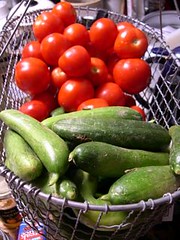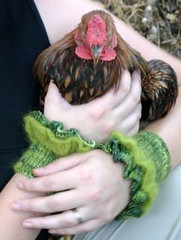 Auburn Knit Night and Courthouse Coffee joined forces to be in the parade for the first time this year. The knitters used glow sticks to knit in the back of Courthouse Coffee's '69 Ford pick-up. People cheered our glow sticks, the knitting, and the owner of the coffee shop. We cheereed and waved back, feeling on par with our favorite knitting celebrities Stephanie Pearl-McPhee aka The Yarn Harlot and the authors Kay and Ann from Mason-Dixon Knitting. (Psst, Santa: I still really want the new Mason-Dixon Kntting book.)
Auburn Knit Night and Courthouse Coffee joined forces to be in the parade for the first time this year. The knitters used glow sticks to knit in the back of Courthouse Coffee's '69 Ford pick-up. People cheered our glow sticks, the knitting, and the owner of the coffee shop. We cheereed and waved back, feeling on par with our favorite knitting celebrities Stephanie Pearl-McPhee aka The Yarn Harlot and the authors Kay and Ann from Mason-Dixon Knitting. (Psst, Santa: I still really want the new Mason-Dixon Kntting book.)The group able to be in the parade left to right is Debbie, Gail, Earin, Luci and Sharon.
For more parade pics, check out this link.
Auburn Knit Night is open to knitters, crocheters, and other hand crafts. We meet Tuesday evenings at Courthouse Coffee in Auburn from 6-9pm.
And to plug Courthouse Coffee, let me just say that it offers so much more than coffee. There's an exciting variety of Fair Trade drinks and high quality salads, soups, sandwiches, pie and other goodies. Also, wi-fi internet access, space for local groups to gather, and is convieniently located adjacent to the year-round, Saturday morning farmers' market. And did I mention the wine and beer?































